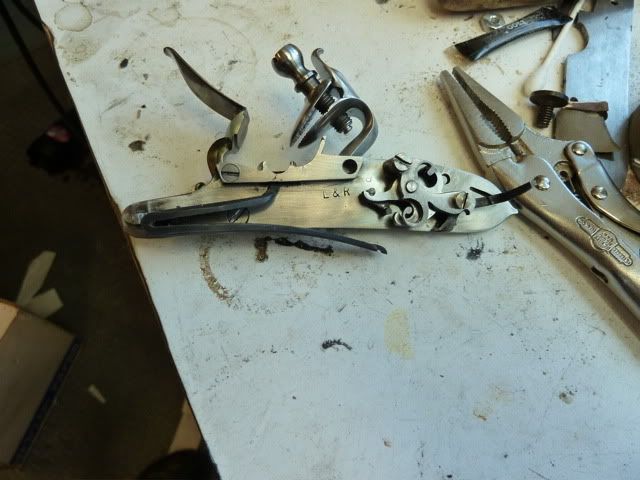Most locks suffer from a inadequate mainspring rather than a too strong frizzen spring.
There is a lot of really Looney Tunes ideas out there on lock springs.
If the lock properly designed a strong spring is not going to arbitrarily break flints.
Flints are sometimes broken by a rebounding frizzen.
I have a lock on a rifle that was a real flint eater. I finally lightened the MS till it would no longer work.
The guy that make the lock about 30 years ago recommended I put on a L&R 1700 frizzen on it and fixed it. Put in a MS that is STRONGER than the one I lightened and the lock no longer eats flints. Does it get 60 shots from a flint, doubt it. Neither does my copy of a Manton lock. My swivel breech is reasonably fast and reliable as heck and does not eat flints and the last one lasted a very long time. But the one I replaced it with does not spark nearly as well.
ITS A ROCK some work better than others all the flints I have for it are black Brandon flints so they should be the same right?
I think I need more mainspring power but in the this case I would have to make a different tumbler, link, maybe a mainspring and I think I will pass on that right now.
I actually increase the tension on most springs in tuning the lock.
This lock had both the MS and FS rearched for more preload.
Keep the springs snappy. Decent cock speed/power and decent resistance by the frizzen spring.
The flintlock is a very complex piece of engineering that looks deceptively simple. Its not all that simple and if you wonder if you can fix it leave it alone.
One thing most users can do and not screw up too much is to put the frizzen in the oven at 375 degrees (checked with 2 oven thermometers) and let it bake for an hour then let it cool. Excessively hard frizzens are a source of trouble as well.
Years ago a couple of guys (IIRC) built a "try lock" that had adjustable parts that would change frizzen face angles etc. They then started testing. They then wrote it up in a 1960s issue of Muzzle Blasts. It was very helpful to me as a kid making guns in Iowa.
Curved frizzen faces are better than straight in most cases and the cock needs to point the flint into the pan and it needs to come down so the flint is CLOSE to the pan.
Also the fact that a lock will spark with no frizzen spring is no reason to assume that a weak frizzen spring is a good thing. But some people seem to think this is the case. Weak springs are a way to work around a problem the person does not know how to fix otherwise.
Old locks are not a good guide to spring tension since they are often weakened by having lost some preload over the years. Copying an original lock by casting can result in the cast springs having less preload than the lock orignally had due to this.
Dan






